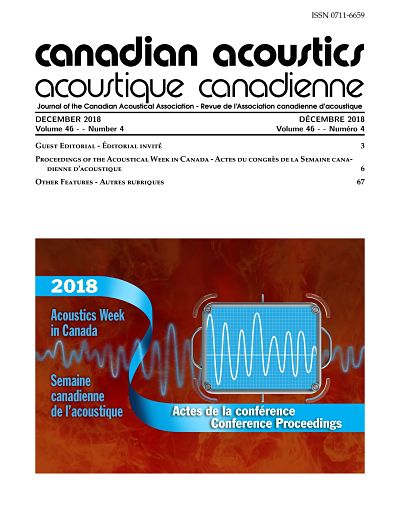Cross-Linguistic Bracing : Analyzing Vertical Tongue Movement
Abstract
Bracingdescribes a tongue posture in which the tongue is in contact with the vocal tract surface. Lateral bracing,in particular, refers to when the sides of the tongue contact the roof of the mouth, along either the upper molars or hard palate. Previous research has found evidence of lateral bracing in six native speakers of different languages [Cheng et al. 2017. Canadian Acoustics, 45(3), 186-187]. The current study examines lateral bracing cross-linguistically at a larger scale using ultrasound technology to image tongue movement. We tracked and measured the magnitude of vertical tongue movement at three positions (left, right, and middle) over time using Flow Analyzer [Barbosa, 2014. J Acoust Soc Am, 136(4), 2105-2105]. Preliminary results across all six languages, including Cantonese, English, French, Korean, Mandarin and Spanish, show that the sides of the tongue are more stable than the center and stays at a relatively high position in the mouth. The magnitude of movement at the sides are significantly smaller than the center of the tongue. Further, releases of the sides vary in frequency for different languages. Taken together, this gives evidence that bracing is a physiological fact about speech production irrespective of the language spoken.Additional Files
Published
How to Cite
Issue
Section
License
Author Licensing Addendum
This Licensing Addendum ("Addendum") is entered into between the undersigned Author(s) and Canadian Acoustics journal published by the Canadian Acoustical Association (hereinafter referred to as the "Publisher"). The Author(s) and the Publisher agree as follows:
-
Retained Rights: The Author(s) retain(s) the following rights:
- The right to reproduce, distribute, and publicly display the Work on the Author's personal website or the website of the Author's institution.
- The right to use the Work in the Author's teaching activities and presentations.
- The right to include the Work in a compilation for the Author's personal use, not for sale.
-
Grant of License: The Author(s) grant(s) to the Publisher a worldwide exclusive license to publish, reproduce, distribute, and display the Work in Canadian Acoustics and any other formats and media deemed appropriate by the Publisher.
-
Attribution: The Publisher agrees to include proper attribution to the Author(s) in all publications and reproductions of the Work.
-
No Conflict: This Addendum is intended to be in harmony with, and not in conflict with, the terms and conditions of the original agreement entered into between the Author(s) and the Publisher.
-
Copyright Clause: Copyright on articles is held by the Author(s). The corresponding Author has the right to grant on behalf of all Authors and does grant on behalf of all Authors, a worldwide exclusive license to the Publisher and its licensees in perpetuity, in all forms, formats, and media (whether known now or created in the future), including but not limited to the rights to publish, reproduce, distribute, display, store, translate, create adaptations, reprints, include within collections, and create summaries, extracts, and/or abstracts of the Contribution.


